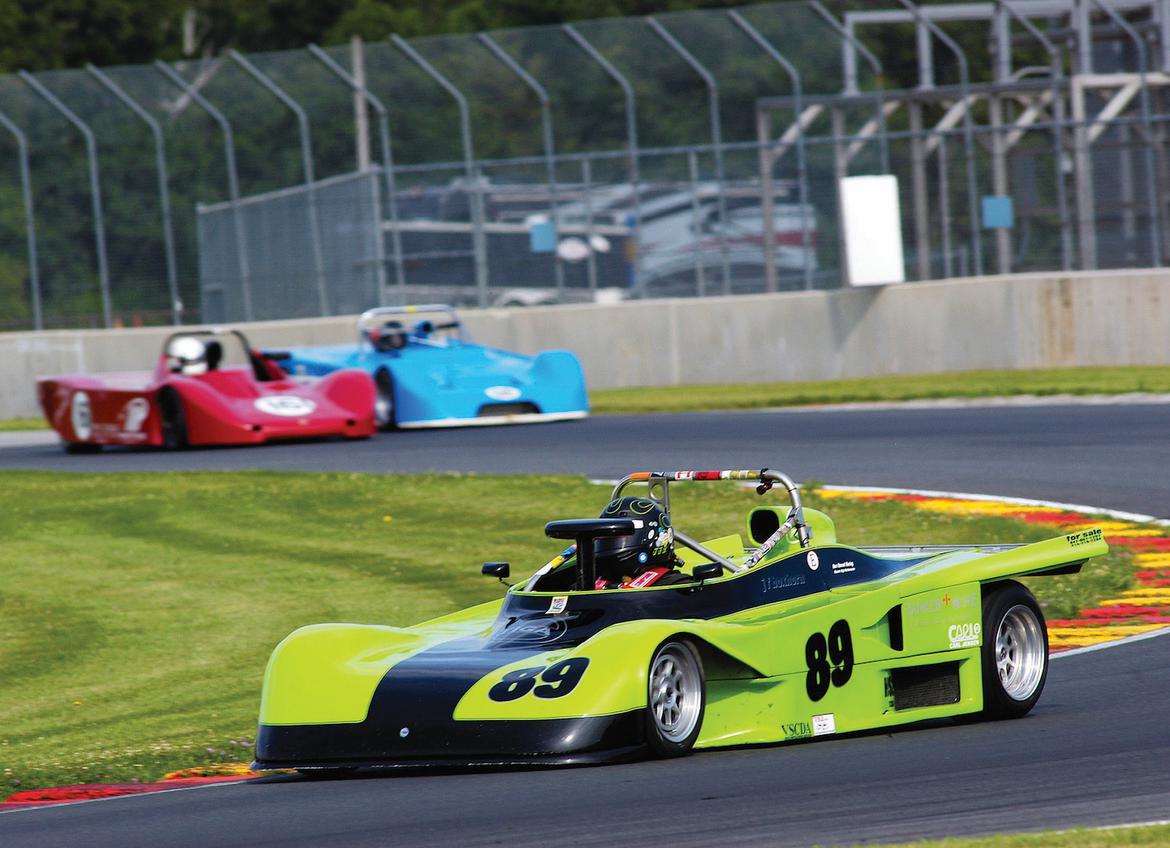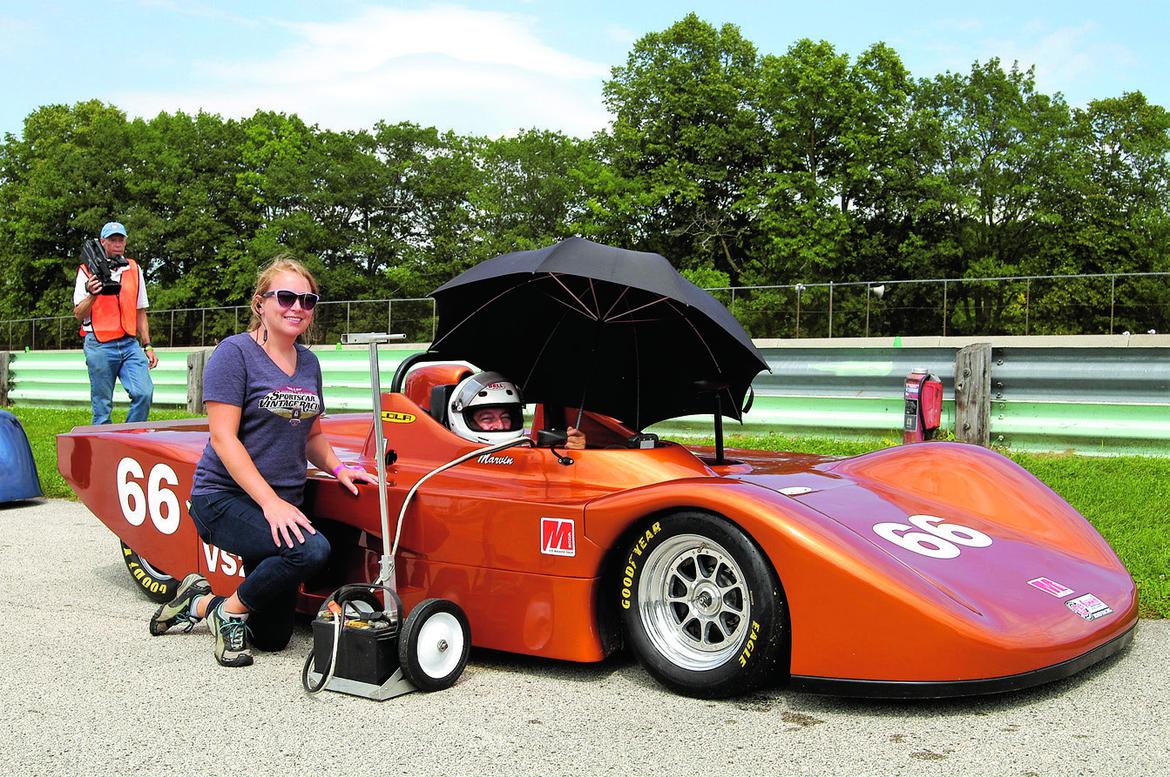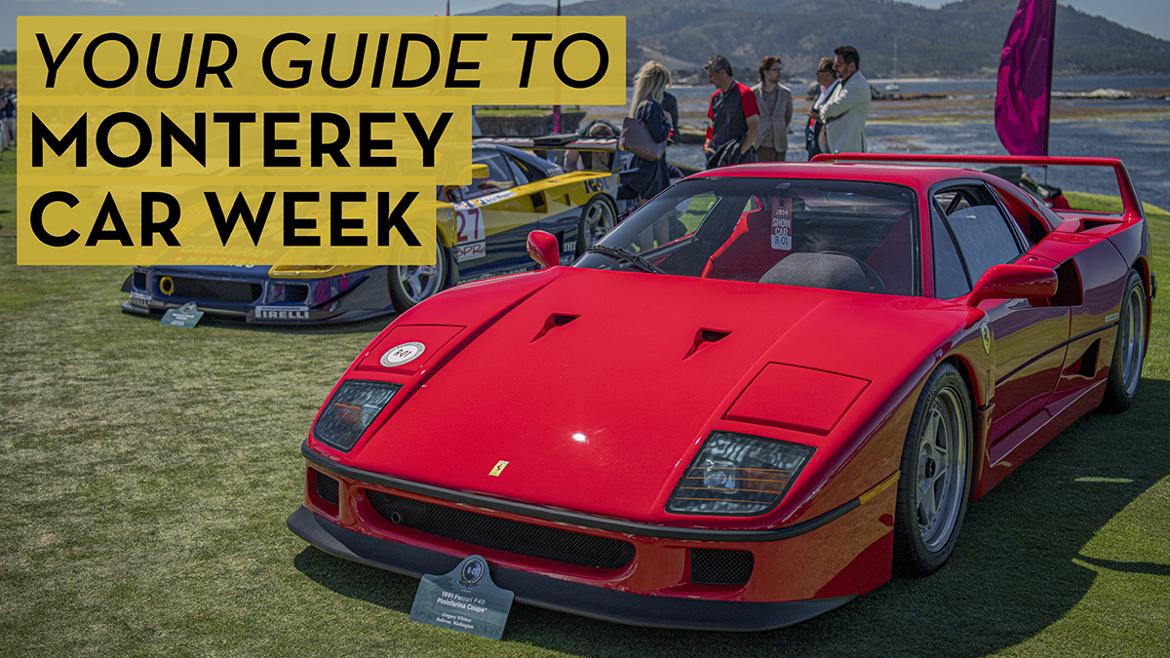Story By James Heine • Photos As Credited
Like many things in motorsports, the genesis of Sports 2000, a now venerable class familiar to most road racers and fans, was a response to a money problem, or more specifically, a lack-of-money problem.
Step back for a moment to some 40-plus years ago and the mid-1970s. Here in the U.S., the economy drifted in and out of the doldrums, with inflation, interest rates, and unemployment all high. Money was tight not only here, but nearly everywhere, including the UK and Europe.
Thanks to the lackluster economy, road racing saw increased costs and tight budgets. Fields–especially in the small-displacement prototype classes–were, well, thin.
In England, John Webb, motorsports impresario extraordinaire and owner of the Brands Hatch racing circuit, responded to the dwindling numbers in the small-displacement sports-racing classes by creating Sports 2000 in 1976. This was a class, and a series, for two-seat prototype race cars that allowed few modifications and used as its powerplant what we know as the durable Ford SOHC two-liter “Pinto” engine with, again, strictly limited modifications.
The series’ first year was 1977, and although initial reaction to it was, at least in some quarters, doubtful, by year’s end the overall response was positive. At the end of 20 rounds, there was just one point separating eventual series winner John Cooper from runner-up Divina Galica. (Both, by the way, drove Lola T490s, as did third-place finisher Chris Alford. John Brindley, who finished fourth in that first championship, piloted a Tiga 77SC.)
Over here, we–or at least motorsports legend and Lola importer Carl Haas–took note. In 1978, he imported a handful of S2000 cars for his customers, and the rest, as they say, is history. S2000 went on to become an immensely popular SCCA Club Racing class, featuring a variety of constructors and even branching out into pro events, with Steve Glassey (1980) serving as the SCCA’s first national S2000 champion and Corey Fergus (2012) as the last.
“That’s one of the attractions of the car. It handles very, very well.”
Today, in vintage and historic circles the torch for S2000 is carried principally by Vintage Sports 2000 North America (VS2NA), a volunteer organization of S2 racers whose objective is to “promote the preservation and enjoyment” of Sports2000.
The organization has a roster of about 100 members and serves as an advocacy and advisory group for the class. VS2NA is not a sanctioning body, explains President Jim Hanna, but rather works with groups such as SVRA, VSCDA, VRG, and the SCCA to organize and promote S2 events.
Hanna, a Philadelphia-area Audi dealer, became involved in S2000 in 2010. Previously he had raced production cars, but as he explains, he took “five or six years off for house and college tuitions and all that stuff.
“In 2010, I got the bug again,” he says, “and I wanted to race again. I thought I wanted to get
a Formula Ford or Formula Continental, but a lot of my friends said, ‘No, you need to look at Sports 2000. They’re real race cars, and they’re safer than a formula car.’ So, I wound up buying a Sports 2000.”
Hanna says he has no regrets about buying that 1985 Swift DB2. “The first weekend I ran the
car at Roebling Road,” he recalls, “it was quite a revelation. It sticks like glue. It goes through the corners, and you don’t slow down a whole lot in the corners. That’s one of the attractions of the car. It handles very, very well. Again, it’s a real race car. As you tune it–shocks and springs and weight distribution and corner weights and things like that–you’re doing the same things you would do in any real racing car.”
Plus, Hanna adds, the cars are durable and not as expensive to run “as B sports racers, or Lolas and Chevrons, those kinds of cars.”
Seven-time SCCA Sports 2000 Champion and four-time ProSports 2000 Champion John Fergus agrees. “I started in 1980 with S2, and I liked the class for a number of reasons,” Fergus explains. “One, everybody had the same engine and the same tires and whatnot, so it was, as they say, a driver’s class. It’s an affordable class. It’s no more expensive than Formula Ford–now Formula F–because the engines are quite durable. Plus, it’s a proper race car, and it’s easy to maintain.”

Photography Credit: James Heine

Photography Credit: James Heine

Photography Credit: James Heine

Photography Credit: James Heine

Photography Credit: James Heine

Photography Credit: James Heine

Photography Credit: James Heine

Photography Credit: James Heine

Photography Credit: James Heine
GETTING STARTED
The foundation of Sports 2000 racing remains its affordability, its accessibility, and its ability to offer enjoyable racing, observes Simon Green, the membership and technical contact for Vintage Sports 2000 North America (VS2NA), a volunteer advocacy and advisory group for S2000.
“They’re very quick, much faster than you might imagine, and the racing’s always been great,” says Green, who’s also been racing in the class since 1983.
The range of cars available is wide, from familiar constructors such as Lola, Swift, Carbir and Tiga to many others who, over the years, have also built S2 racers.
What would Green recommend to a beginning S2000 racer? “Of the current list of cars, it would probably be the Tigas,” he replies. “They were very good and very easy to drive.”
Green says that Swifts are also excellent. “A lot of people have them, they are easy to drive, and there’s a lot of data available. With the Swifts in particular, it’s a good way to start your craft, learn with it, and grow with it.”
As for cost, while a new owner might be able to find an S2000 in the $20,000 range,
a reliable, entry-level S2000 with some spares will likely run $30,000 to $35,000, Green says. A front-of-the-grid car would sell for more, of course.
Some years ago, prices for S2000 cars were less, Green explains, “but in recent years they’ve begun to increase.” He adds, “all things considered, as far as race cars go, they’re good value for the money.”
Fergus says he decided that Sports 2000 had–and has–an additional benefit for him: fenders. “That was important, because I’m a working guy, and I was a working guy,” he adds. “I have someplace to be on Monday morning. And so that was attractive to me.”
Aside from fenders, Fergus–who is vice president and treasurer of the Road Racing Drivers Club, and who cut his motorsports teeth in SCCA Solo (three championships there) and also holds an IMSA GTU title–says the cars are simply fun to drive.
“Whether vintage or otherwise, the great thing about the S2 is they are a ball to drive,” he says. “I mean, they’re really fun. I’ve had the great pleasure to drive and race a lot of cars for some of the best teams. And in the end, the fun that comes from driving this car is basically unmatched.”
And, Fergus adds, when you think about it, if you can put together “fun” and “economical” (or at least “not expensive”) when describing a racing class, you have a good recipe for enjoyable racing.
“For the performance, for the speed, for the safety, for the fun, and, most important, for the cost of running, it’s probably the best bang for the buck,” he says.

Photography Credit: Patrick Temblay
NUTS AND BOLTS: Inside a Sports 2000
The original idea for Sports 2000 was, in many respects, quite simple: stick some closed-wheel bodywork atop a Ford-powered, open-wheel racer while keeping the rules restrictive. There was much more to the concept, of course, but as a one-sentence original vision, that comes pretty close.
S2000 today, as promoted by Vintage Sports 2000 North America (VS2NA), adheres closely to John Webb’s concept and to the S2 rules as promul gated by the SCCA.
What you have is a full-bodied, two-seat, rear-engined race car of about 1300 pounds (with driver) powered by a durable 2.0-liter Ford SOHC engine with a stock intake manifold and a single carburetor. The cars have 13-inch wheels–6 inches wide up front, 8 inches wide at the rear–disc brakes, and a reliable Hewland four-speed gearbox.
The cars are capable of 150 horsepower or thereabouts and may reach speeds of 130 mph or more at some tracks. For VS2NA competition, the cars are placed in one of three classes: S2 (Sports 2000), VS2 (Vintage Sports 2000), or HS2 (His toric Sports 2000). The classes reflect the changes in S2000 over the decades.
“I thought they were really neat,” recalls Randy Hartman of his introduction to S2000 more than 30 years ago. Hartman, the manager/crew chief for Motorsports Promotions, the company that prepares Corey Fergus’s championship-winning World Challenge Porsches, is a longtime S2000 mechanic and guru as well as the brother-in-law of S2 racer John Fergus. Back then, Hartman recalls, in addition to their other characteristics, the cars’ appearance reminded him of Can-Am racers.
“They were open cockpit and rear-engined, and the way the rules were written, the class really concentrated on driver input and skill,” Hartman says. “It was neat, because you would have to fine-tune a car to get any kind of advantage out of it.”
Basically, it’s still that way today, he notes. The rules remain restrictive, the engines durable
(as long as you don’t over-rev them, they are bulletproof and long-lasting, Hartman says), and driver skill still plays an important role.
If you are interested in S2, talk with people who are involved already, Hartman advises. “I learn something new every day. The more people you talk to, the more you learn,” he says. “People are willing to help. Just ask questions. You’ll get an honest answer, because we’re all here to have fun.”

Photography Credit: James Heine

Photography Credit: James Heine

Photography Credit: James Heine

Photography Credit: James Heine

Photography Credit: James Heine

Photography Credit: James Heine
Comments
View all comments on the CMS forums
You'll need to log in to post.







































